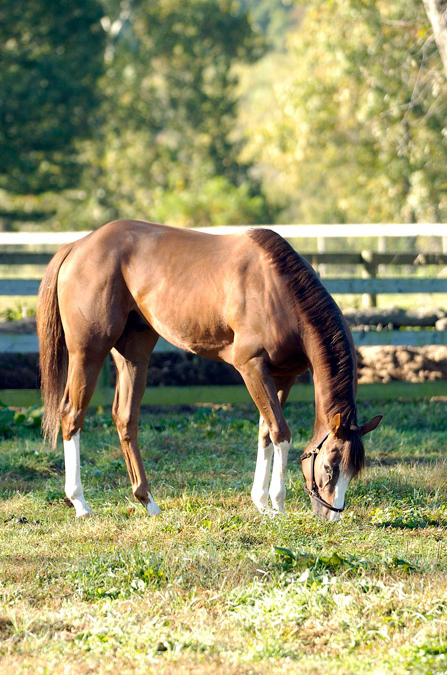Can you get the flu from your horse?
- July 25, 2019
- ⎯ Mick McCluskey, BVSc, MACVSc
Duke University researchers recently sought to answer a long-standing question about the equine influenza virus (EIV): Can it infect people? Their answer is “yes.”
Working with graduate students from China and Mongolia, Gregory Gray, MD, MPH, FIDSA, of Duke’s Division of Infectious Diseases, headed a team that reviewed 2,206 scientific journal articles related to equine influenza outbreaks that mentioned both humans and horses.

The earliest study of significance that the team found was published in the Ukraine in 1959. Based on bloodwork done on affected horses, the Ukrainian researchers determined that an influenza outbreak among race horses may have been associated with a human flu outbreak that occurred at the same time.
Studies conducted in the mid-1960s at the National Institutes of Health showed that 12 to 20 percent of people who were experimentally inoculated with a H3N8 equine influenza virus developed clinical symptoms, such as a fever or cough.
“Now, that’s a low percentage,” says Gray, “and these were people in a hospital setting with high number of viruses sprayed up their noses, so we aren’t clear how frequently people have symptoms from equine influenza virus infection in a more natural setting, but these studies—and others like it—show that humans can be infected with at least one type of equine influenza virus.”
More recent studies provided evidence of previous equine influenza virus infection in people exposed to horses, but questions remain. “In an active study in Mongolia we continue to look for convincing proof that humans play a role in sustaining the transmission of these viruses in horses by serving as silent vectors,” says Gray. “That means they are harboring the virus themselves and passing it along to other horses. This isn’t a case of the virus being on their hands and passed through contact, but humans that are infected and shedding it in their own nasal secretions to infect horses. We haven’t found such evidence, but it’s biologically believable based on the historical evidence we’ve looked at.”
Gray notes that the bio-security measures and hygiene practices common in the Western world minimize the threat of the EIV passing between people and horses. Elsewhere, however, the risk is greater. “In a place like Mongolia or China, where one caretaker may be looking after a large herd of working horses, a sick horse or human may go unnoticed. That’s where you have some potential of a problem.” He adds that if the equine influenza virus were to change or if a different strain were to emerge, the scenario could change drastically.
“Modern H3N8 strains of influenza in horses are mild and fairly stable, but there are some strains–such as H7N7—that circulated 30 or 40 years ago and have disappeared,” says Gray. “If they were to come back, the human population wouldn’t haven’t the partial resistance we do have to the H3N8 strain and there would likely be a greater probability that it would infect humans. That’s when you can develop an outbreak situation like we’ve seen with a number of humans becoming sick with various type of avian influenza viruses.”
Fortunately, says Gray, “there are veterinarians dedicated to this study in various parts of the world, closely monitoring for outbreaks in horses and the emergence of new strains. If that happens we don’t know how big of a problem it will be, but we will likely soon become aware of it and start taking steps to contain it.”
As for what individual horse owners can do to protect themselves and their horses against influenza, Gray recommends following the vaccination advice of veterinarians and doctors: “If your doctor suggests an influenza vaccine, get it. In most years, the human version will give you some protection from equine variants because they both contain some similar components. And by the same token, if your veterinarian recommends influenza vaccines for your horses, take that advice.”
Reference: “A review of evidence that equine influenza viruses are zoonotic,” Pathogens, July 2016
This article first appeared in EQUUS issue #470, November 2016.









